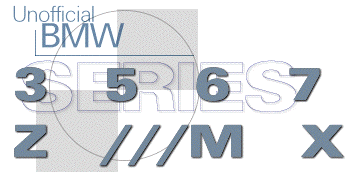|
Ron Stygar Carl Buckland Dale Beuning Forums Help
From digest.v6.n602 Wed Apr 30 08:17:27 1997 Harris Yong wrote: There are quite a few factors involved in wheel/tire/suspension combinations, and the right match is often difficult to find. As you probably know, E36s up to and including 1995 models had 235/40ZR17 tires mounted on 7.5" wide wheels. In 1996, there was a suspension design revision, which included changing the fronts down to 225/45ZR17, but increasing the rear to 245/40ZR17. I have asked about the technicalities, but no one has replied with a definite answer. This sort of tire change usually entails more understeer (pushing at the limit), but from what I've heard, the difference is not that significant as expected. Generally, as per a BMW guide to wheels for dealers, given a static tire size, a larger wheel width yields poorer compression (damping and ride softness) but increase lateral stability of the tires. So, to a certain extent, a wider wheel setup can increase cornering abililty. Harris: When I attended the Dinan Tech Session a couple weeks ago, this question came up. Steve Dinan said BMW switched to 7.5s on the front because of complaints from owners about "tramlining" - this is where the front tires get "caught" in a rut in the road, particularly when coming to a stop, and forces the car to steer itself a bit. Apparently, switching to a narrower wheel pretty much alleviates the problem. I've driven a 95 M3 and noticed this problem. My 96 M3 doesn't exhibit this problem. The narrower wheels and changes to the suspension have apparently fixed the problem. |

